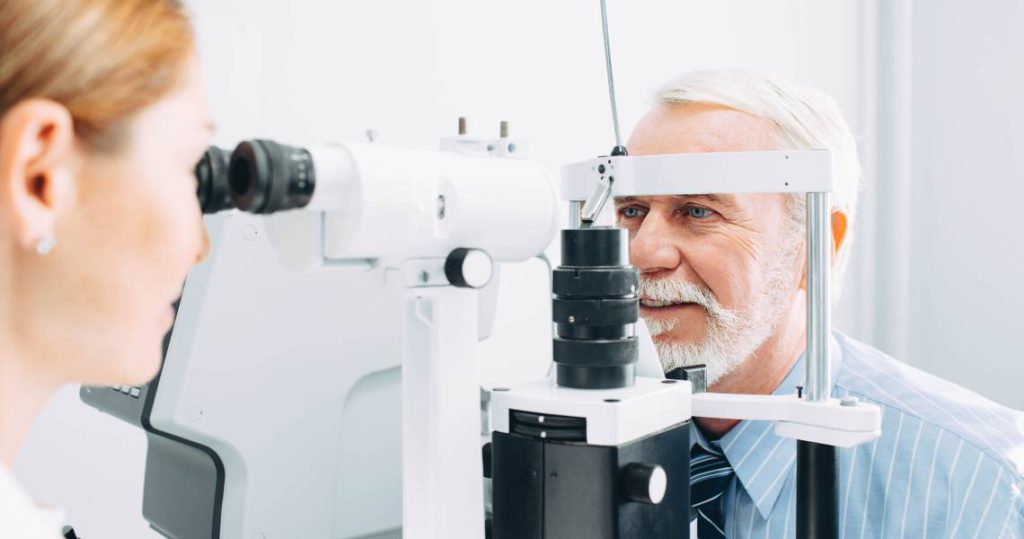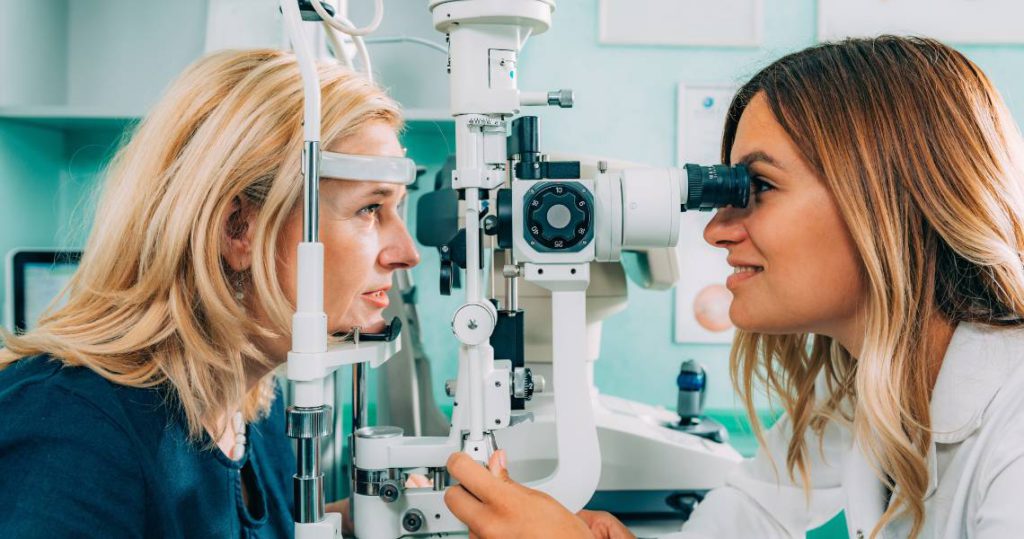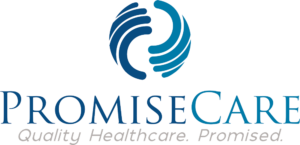
When considering your health at work, especially as you navigate the later stages of your career or adjust to retirement, how does your environment affect your eyes and stress levels?
Making minor adjustments, such as minimizing glare on your computer screen or ensuring your seating arrangement supports your posture, can significantly enhance your visual and mental well-being.
For individuals over 50, managing stress is crucial not only for emotional balance but also for preventing physical issues like eye strain and headaches, which can become more prevalent with age.
Workplaces that focus on these health aspects often report increased productivity and greater employee satisfaction. But how can you effectively incorporate these practices into your daily routine, particularly if you’re transitioning into retirement or taking on less demanding roles?
Let’s delve into some practical strategies that could transform your day-to-day work experience, tailored specifically for those aged 50 and older.
- Ergonomic Comfort: Invest in an ergonomic chair that supports your spine and consider a standing desk to keep your posture dynamic. Adjustable monitor stands can also help reduce neck strain by bringing your screen to eye level.
- Screen Brightness and Text Size: Adjust the brightness of your computer screen to a comfortable level to reduce eye strain. Increase the text size on your devices to avoid squinting, which is particularly helpful as our eyes age.
- Regular Breaks: Integrate short breaks into your schedule to stand, stretch, and rest your eyes. This is essential to prevent stiffness and maintain energy levels, especially important for those managing chronic conditions or those who find prolonged sitting uncomfortable.
- Mindfulness and Stress Management: Engage in simple mindfulness exercises, such as deep breathing or meditation, which can be done even at your desk. These practices help manage stress and focus, enhancing both emotional and physical health.
- Community and Social Interaction: If you’re retired, consider volunteer work or part-time jobs that encourage social interaction and keep you engaged with your community. This can greatly enhance your sense of purpose and well-being.
- Health Maintenance: Regular check-ups with your healthcare provider are crucial. Stay informed about how to best use benefits like Medicare and any supplemental insurance you might have. This ensures that you’re not only managing any age-related health issues effectively but also preventing them where possible.
By implementing these adjustments, you can ensure a healthier, more comfortable work environment, whether you’re winding down your career, shifting to lighter duties, or enjoying retirement. Remember, small changes can lead to significant improvements in your quality of life.
Main Points
- Offer comprehensive vision benefits and regular eye exams tailored for those aged 50 and older, emphasizing the importance of maintaining eye health to enjoy a fulfilling and productive retirement. Regular check-ups can help manage age-related vision changes and contribute to overall mental well-being.
- Design ergonomic workspaces that cater to the needs of older adults, minimizing eye strain and supporting good posture. Adjustable lighting and monitor stands can make a significant difference in comfort and prevent fatigue, making daily tasks more enjoyable and less straining.
- Provide stress management programs that include strategies for relaxation and mindfulness, especially suited for those transitioning into or enjoying retirement. Regular breaks and simple eye relaxation exercises can help maintain focus and reduce stress, enhancing daily life quality.
- Encourage a supportive and inclusive work environment that values open communication and mental health, particularly for those in their 50s and beyond. This could include workshops on understanding the emotional aspects of aging and fostering intergenerational cooperation.
- Ensure that both digital and physical resources are easily accessible, using clear layouts and larger fonts to accommodate visual changes that often come with age. This not only aids in preventing eye strain but also makes information more accessible, allowing older adults to stay informed and engaged effortlessly.
By incorporating these tailored strategies, we can help individuals aged 50 and older feel more valued and supported in their workplace and daily lives, fostering a sense of community and well-being that resonates with their lifestyle and needs.
Understanding Visual and Mental Health

Understanding the Interplay Between Visual and Mental Health for Those Aged 50 and Beyond
As individuals step into their 50s and beyond, maintaining both visual and mental health becomes increasingly significant. This age brings about not only changes in lifestyle but also heightened concerns about health, including the effects of vision loss. Individuals experiencing vision impairments at this stage are notably more likely to face challenges such as depression, highlighting a crucial connection between how we see the world and how we feel.
Diving deeper into this matter, studies have shown that those with compromised vision are 2-3 times more likely to struggle with depression. This statistic emphasizes the importance of regular eye check-ups and robust support systems. Vision loss can curtail one’s ability to perform daily activities, potentially leading to social isolation and a decline in quality of life, both of which can impact mental well-being.
Interestingly, research also sheds light on how individuals with depression perceive visual stimuli differently compared to those without the condition. This underscores a bidirectional relationship between mental health and vision, each potentially exacerbating the other. Understanding these dynamics is vital in crafting comprehensive care strategies that cater to both eye and mental health.
For those navigating the later stages of life, the connection between eye health and brain health can’t be overstated. Regular eye examinations not only safeguard your vision but also your overall mental well-being, playing a crucial role in your quality of life.
Here are some practical tips tailored for those aged 50 and above:
- Schedule Regular Eye Exams: Early detection of eye health issues can prevent complications and link to broader health insights.
- Stay Socially Connected: Engage in community activities or hobbies that encourage social interaction and mental stimulation.
- Maintain an Active Lifestyle: Incorporate light to moderate physical activities, such as walking, yoga, or swimming, which are also gentle on the joints.
- Eat for Eye Health: Include foods rich in antioxidants, like leafy greens and berries, which can help preserve vision.
- Understand Your Health Coverage: Familiarize yourself with Medicare and supplemental plans that cover eye care services.
Strategies for Protecting Workforce Health

As we mature, understanding the connection between visual health and overall mental well-being becomes increasingly important. For individuals aged 50 and older, safeguarding eye health is crucial, not only to maintain independence but also to enhance quality of life.
By ensuring access to comprehensive vision benefits, organizations can support not only those in need of corrective lenses but also contribute to the overall productivity and satisfaction of their experienced workforce.
Given the challenges that prolonged screen time can present, adopting blue light-blocking glasses can be particularly beneficial for older employees. These glasses help mitigate digital eye strain, which is vital as maintaining sharp visual focus becomes more challenging with age. This simple measure is a testament to an organization’s commitment to its team’s visual and mental health.
Creating ergonomic workspaces can also have a significant positive impact on visual comfort, an aspect that becomes increasingly important as we age. An ergonomic environment extends beyond good physical posture; it includes positioning monitors at an appropriate eye level to reduce neck strain and ensuring sufficient lighting to prevent glare. These considerations help make daily responsibilities less strenuous and more enjoyable, which is particularly beneficial for those considering phased retirement or reduced work hours.
It’s also important to consistently engage with remote and hybrid workers, who might be navigating the challenges of setting up an efficient home office. Regular dissemination of eye health tips through emails or newsletters, coupled with reminders to take frequent breaks and advice on organizing a comfortable home workspace, can make a significant difference in maintaining health and productivity.
Enhancing Workplace Safety Through Vision

The importance of maintaining clear vision can’t be overstated, especially as we navigate the golden years. For those of us aged 50 and older, ensuring our eyes are well-cared for is crucial in preserving our safety and enhancing our productivity, whether at work or in our daily lives.
Let’s delve into how regular vision screenings, ergonomic visual setups, and protective eyewear can be vital components in maintaining our health and optimizing our performance.
Regular Vision Screenings: As we age, our vision naturally changes. Regular check-ups with an eye care professional can help detect common age-related issues such as presbyopia, cataracts, and glaucoma early on. Early detection not only safeguards your vision but also contributes to your overall well-being, allowing you to continue enjoying your hobbies and lifestyle without interruption.
Ergonomic Visual Setups: For those who spend considerable time reading or in front of screens, ensuring that your environment is visually ergonomic is key. This includes adequate lighting and monitors that are positioned to reduce strain. Such setups help prevent eye fatigue and maintain your productivity, which is especially important if you’re managing work responsibilities or simply enjoying leisure activities like reading or handcrafting.
Protective Eyewear: If you’re involved in activities that could pose a risk to your eyes, such as woodworking, gardening, or even sports like tennis, wearing the right protective eyewear is essential. Glasses with the correct prescription and protective features can prevent injuries and ensure that you continue to engage safely in these activities.
Incorporating these elements into your routine doesn’t just contribute to eye health; it enhances your overall quality of life, allowing you to stay active, engaged, and independent. By taking proactive steps to care for your eyes, you’re setting yourself up for years of productivity and enjoyment, no matter what your specific interests or needs may be.
Regular Vision Screenings
Regular vision screenings are crucial for maintaining your health and safety, especially as you navigate the golden years. Detecting eye issues early can prevent them from worsening, ensuring that you continue to enjoy your retirement and daily activities without the risk of injury. Eye health isn’t only about maintaining good vision—it’s integral to living independently and engaging actively in your favorite pastimes.
Integrating regular vision screenings can significantly impact your overall quality of life. Research indicates that wearing the correct eyeglasses can improve productivity and efficiency by up to 22%. For those in their 50s and beyond, this means more enjoyment and less strain during activities like reading, crafting, or even driving.
Including eye care in your health plans is also a wise investment in your well-being. It underscores a commitment to your long-term health, fostering a culture of safety and care within your family and social circles. Regular updates on the importance of eye health through community newsletters or senior centers can help keep eye safety at the forefront, preventing accidents and promoting a proactive approach to maintaining good vision.
To make the most of these screenings, consider these practical tips:
- Schedule annual eye exams with a professional who’s experienced with age-related eye conditions.
- Keep your eyewear prescriptions up to date to support your daily activities.
- Incorporate foods rich in vitamins C and E, zinc, and omega-3 fatty acids into your diet to help ward off age-related vision problems like macular degeneration and cataracts.
Ergonomic Visual Setups
Understanding the significance of eye health, especially in later years, ergonomic visual setups become increasingly vital. For those aged 50 and older, enhancing your workspace can play a crucial role in reducing eye strain and maintaining productivity. By adopting ergonomic principles, you not only care for your eyes but also boost your overall work efficiency, which is essential whether you’re in a traditional workplace or managing tasks from home.
Companies like Meta, Apple, and Google have led the way by implementing ergonomic designs that cater to eye health, highlighting the importance of natural lighting and monitors positioned at eye level. These practices are especially beneficial as we age, helping to minimize eye strain which can become more problematic over time. Ensuring your workspace is well-lit with natural light and setting up your monitor to avoid unnecessary eye or neck movements can make a significant difference.
Additionally, integrating simple habits tailored to eye care, such as the 20-20-20 rule—taking a 20-second break to look at something 20 feet away every 20 minutes—can greatly alleviate eye fatigue. This is particularly important as our eyes age and require more care to function optimally. Regular eye exercises can also be pivotal in maintaining eye health, helping to keep your vision sharp and your eyes comfortable.
For those navigating later stages of life, such practical and accessible advice isn’t just beneficial; it’s essential for continuing to lead a productive, fulfilling lifestyle. By making these small adjustments, you can significantly enhance your visual health and comfort, ensuring that your eyes remain one of your greatest assets as you enjoy this vibrant chapter of your life.
Protective Eyewear Benefits
Wearing protective eyewear in the workplace is essential, especially as we age, to safeguard our vision and maintain high productivity. For those of us over 50, protecting our eyes isn’t just about injury prevention—it’s a crucial step in ensuring we can continue enjoying our work and leisure activities without disruption.
Eye health is particularly important as we grow older because our risk for certain vision-related issues increases. Implementing protective eyewear can decrease the likelihood of accidents, helping us avoid unnecessary setbacks that could affect our performance and the smooth operation within our teams. This is vital for maintaining not only individual productivity but also that of the entire group.
Moreover, as we think about transitioning into retirement or adjusting our work-life balance, maintaining a safe and healthy work environment allows us to focus on our health and wellness goals. Regular use of safety glasses is reported to enhance productivity by up to 22%. This boost comes from the peace of mind that we’re protected, allowing us to perform tasks with confidence and efficiency.
Effective communication within the workplace about the benefits of protective eyewear is key. Regular safety updates and educational sessions on the importance of eye protection can lead to better compliance and fewer accidents. For those of us in our 50s and beyond, understanding these precautions can assist in prolonging our career or ensuring we’ve a healthy and enjoyable retirement.
Providing eye care benefits, including access to protective eyewear, demonstrates a commitment to the wellbeing of the team. It encourages a culture of health and safety that benefits everyone, fostering a workplace environment where we feel valued and cared for.
Addressing Stress-Related Vision Issues

If you’re encountering symptoms such as eye twitching or strain, it’s essential to consider that these may be indicators of stress affecting your vision. As we age, our eyes become more susceptible to stress-related issues, making it imperative to adopt measures that support eye health.
One effective technique to alleviate eye strain is the 20-20-20 rule, particularly beneficial for those spending considerable time on screens or reading. Every 20 minutes, take a moment to look at something 20 feet away for at least 20 seconds. This simple practice helps relax your eye muscles and can reduce the discomfort associated with prolonged focus.
Additionally, optimizing the lighting in your workspace or home can make a significant difference. Ensure that your environment is well-lit to reduce strain, but avoid overly harsh lighting that can lead to glare. Soft, natural light is best where possible, and adjustable desk lamps can help tailor the lighting to your specific needs.
Beyond these practical tips, it’s also important to engage in regular eye check-ups, especially as we move into our 50s and beyond. Regular consultations with an eye care professional not only help in maintaining your vision but can also detect early signs of other age-related eye conditions such as cataracts or glaucoma.
Identifying Stress-Induced Symptoms
Understanding Stress-Induced Vision Issues as You Age
As we grow older, recognizing symptoms of stress, such as eye strain or blurred vision, becomes increasingly significant in preserving our visual health. Stress affects not only the mind but also the eyes, impacting those in their 50s and beyond perhaps even more profoundly. Common visual disturbances linked to stress include dry eyes, eye twitching, and the exacerbation of conditions such as blepharitis. It’s crucial for those in this age group to be aware that these aren’t just minor annoyances but signals from your body indicating high stress levels.
Chronic stress interferes with your autonomic nervous system, which can directly contribute to these visual issues. If you find that your eyes often feel strained or that your vision blurs after periods of intense stress, recognizing these signs is the first step toward better health management. Such symptoms can’t only reduce your productivity but also cause considerable discomfort, ultimately affecting your daily activities and ability to enjoy life.
For those navigating the later stages of life, practical and straightforward advice on managing stress and its effects is invaluable.
Here are a few tips:
- Regular Eye Check-ups: Schedule visits with your eye doctor to monitor eye health and discuss any stress-related symptoms you’re experiencing.
- Mindfulness and Relaxation: Techniques such as meditation or gentle yoga can significantly reduce stress levels, potentially alleviating stress-induced eye symptoms.
- Proper Lighting: Ensure that your reading and work environments are well-lit to reduce eye strain.
- Balanced Diet: Incorporating foods rich in vitamins A, C, and E can help maintain eye health.
Adopting these practices can lead to improved well-being and a more enjoyable lifestyle in your 50s and beyond. By staying informed and proactive about your health, you can better manage stress and protect your vision, ensuring you continue to live a full and vibrant life.
Practical Eye Relaxation Techniques
As we age, maintaining our eye health becomes even more critical, especially for those of us embracing the golden years beyond 50. With the increased likelihood of experiencing vision issues due to prolonged screen use, it’s imperative to adopt specific eye relaxation techniques tailored to our needs.
Here are some simple yet effective strategies to help preserve your vision and reduce eye strain.
One invaluable method is the 20-20-20 rule. For every 20 minutes spent looking at a screen, pause for 20 seconds to gaze at an object approximately 20 feet away. This practice not only helps in refocusing your vision but also significantly mitigates eye fatigue, a common concern at this stage of life.
Incorporating certain eye exercises into your daily regimen can also prove beneficial. For instance, conscious blinking is a straightforward yet effective way to keep your eyes well-lubricated and prevent the discomfort of dry eyes, which becomes more common as we age. Make it a point to blink slowly and deliberately every few minutes, especially when engaging with digital devices.
Another soothing technique is palming, which can be particularly comforting if your eyes feel weary after a long day. Simply warm your hands by rubbing them together, then gently cup them over your closed eyes. The warmth from your hands helps relax the muscles around your eyes, easing any accumulated stress.
Additionally, practicing eye rolling exercises can enhance circulation and muscle flexibility around the eyes. Gently roll your eyes in a full circle, first clockwise and then counterclockwise. This not only helps in maintaining muscle tone but also assists in alleviating tension from prolonged focusing activities.
These techniques aren’t only practical but also easy to integrate into your daily routine, ensuring that you can continue enjoying your leisure activities—be it reading, gardening, or crafts—without discomfort.
Enhancing Workplace Lighting Solutions
To boost workplace productivity and address vision-related concerns, it’s crucial for individuals aged 50 and older to consider tailored lighting solutions that enhance both comfort and functionality. As we age, natural daylight can be particularly soothing and beneficial, reducing the risk of eye strain and boosting mood—a simple yet effective strategy to enhance work performance.
Incorporating adjustable lighting in your workspace is a wise choice. This adaptability allows you to tailor the brightness and type of light to your specific activities, which is essential for maintaining visual clarity and concentration as eyesight evolves with age. Whether you’re reviewing financial documents or planning your next leisure activity, the ability to modify your lighting can significantly impact your comfort and efficiency.
The negative effects of inadequate lighting, such as headaches, eye fatigue, and decreased productivity, are particularly pertinent for those over 50. Ensuring that your workspace is well-lit isn’t merely a matter of comfort but a crucial aspect of health care. Optimal lighting conditions are key to preserving eye health and maintaining vitality throughout your workday.
For those navigating retirement or adjusting to a new rhythm of life, creating a workspace that includes excellent lighting is an important step in caring for your well-being. This consideration isn’t just about professional productivity; it’s about enhancing your overall quality of life, allowing you to enjoy hobbies and activities without discomfort.
Onsite Vision Care Solutions

Onsite vision care solutions offer a convenient way to access eye exams and fittings right at your workplace, tailored to meet the specific needs of those aged 50 and older. This service allows for the scheduling of eye exams during work breaks at dedicated vision centers onsite, making it a practical choice for maintaining optimal eye health without disrupting your day.
Imagine the ease of walking just a few steps from your workstation to a top-notch vision center, staffed by professionals who understand the unique eye health challenges faced by your age group. These centers are outfitted with the latest in eye care technology, ensuring you receive both effective and efficient service. This convenience helps overcome common barriers to receiving regular eye care, such as busy schedules or concerns about traveling to appointments.
Statistics indicate that a significant number of adults over 50 may neglect their eye health, with many not having had an eye exam in the past year. Onsite vision care directly addresses this issue, making it simpler to keep up with essential eye health screenings. Regular check-ups can catch age-related issues such as cataracts, glaucoma, and macular degeneration early, which is crucial for maintaining your vision and overall quality of life.
Moreover, easy access to such important health services not only supports your physical well-being but also contributes to mental peace. Knowing that your employer provides these health benefits can make you feel valued and cared for, enhancing job satisfaction and productivity. When vision concerns are promptly managed, you can focus more effectively on both your professional and personal activities.
By integrating these facilities into the workplace, employers acknowledge the importance of holistic health, including vision care, as a priority. This initiative is particularly beneficial as you approach or enjoy your retirement years, helping you stay active and engaged in both your career and leisure pursuits.
This thoughtful approach to healthcare in the workplace is a testament to the value placed on the health and well-being of employees, particularly as they experience different health needs with age. It ensures that you feel supported and appreciated in your work environment, empowering you to lead a healthier, more fulfilling life.
Managing Optometry Burnout

Managing Optometry Burnout for Those 50 and Older
As individuals age, maintaining both physical and mental health becomes increasingly essential. For those in the field of optometry or considering it later in life, recognizing and managing burnout is crucial. Burnout symptoms such as emotional exhaustion, depersonalization, and a reduced sense of personal accomplishment can significantly impact one’s quality of life and professional fulfillment.
During challenging times, such as the recent COVID-19 pandemic, optometrists—like many healthcare professionals—experienced heightened mental health challenges. The stress and increased responsibilities can contribute to higher rates of burnout, which makes it imperative not to ignore these signs. Instead, prioritizing mental health to mitigate burnout risks is essential.
Strategies to Manage Burnout:
- Encourage Open Communication: Within your practice or professional circle, promote a culture where discussions about workload and stress are welcomed. This openness can foster a supportive environment, helping to alleviate feelings of isolation or overwhelm.
- Balance Professional and Personal Life: As you approach or enjoy retirement, balancing professional responsibilities with personal time is vital. Overworking can lead to burnout, so setting clear boundaries is necessary. Engage in activities that fulfill you outside of work, whether it’s gardening, spending time with grandchildren, or volunteering.
- Seek Support: Don’t hesitate to reach out to colleagues or mental health professionals if you feel overwhelmed. Building a support network can provide you with valuable resources and a sense of community, which is particularly important as social circles may change with age.
- Develop a Recovery Plan: Have strategies ready for days when you feel the impact of burnout. This might include simple joys like reading, pursuing a hobby, or practicing mindfulness and relaxation techniques.
- Stay Informed About Healthcare Options: Understanding your healthcare benefits, especially Medicare and any supplementary plans, can alleviate worries about medical costs should you seek professional help for burnout or other health issues.
Engagement and Community Connection:
Sharing personal stories or experiences with burnout can resonate with peers, providing both comfort and practical solutions. Consider participating in or starting discussion groups, either online or in your community, focused on wellness in older age. This not only helps in sharing valuable insights but also strengthens social connections, which are vital for mental health.
Visual and Accessibility Considerations:
Ensure any resources or reading materials are clear and accessible. Opt for larger fonts and straightforward layouts to accommodate varying levels of visual ability, and make sure online content is easily navigable on any device.
Promoting Healthy Work Environments

Establishing a healthy work environment is crucial, particularly for individuals aged 50 and older, as it supports not only professional satisfaction but also overall well-being. Open communication plays a foundational role in enhancing job satisfaction, which is vital as you approach or navigate retirement. Studies have shown that transparent workplaces lead to significantly higher job satisfaction. When you can freely express your thoughts and know they’re valued, it builds trust and fosters a supportive community at work.
As you share your experiences and achievements at the workplace, you not only validate your own expertise but also contribute to a culture where peers feel encouraged to express themselves. This is particularly important in sectors like healthcare, where clear communication is essential. By maintaining open lines of communication, you can tackle challenges more efficiently, ensuring that all team members are aligned, which is crucial in reducing stress and enhancing productivity.
Moreover, prioritizing mental health becomes increasingly important as we age. By incorporating mental health strategies into daily routines, workplaces can become exemplary environments of support and care. This approach not only helps in reducing stigma associated with mental health issues but also boosts overall job performance, contributing to a healthier atmosphere for everyone.
For those in their 50s and beyond, it’s also beneficial to integrate activities that maintain physical and mental agility. Engaging in suitable fitness activities, such as yoga, walking clubs, or light aerobic exercises, can be incredibly beneficial. Additionally, understanding how to navigate healthcare options, including Medicare and supplementary plans, will ensure that you can make informed decisions about your health care needs.
Incorporating a diet rich in nutrients that supports cognitive function and physical health is also crucial. Foods high in omega-3 fatty acids, fiber, and antioxidants should be part of your daily intake to help maintain your vitality and well-being.
Encouraging Regular Eye Exams

As we age, maintaining our health becomes increasingly crucial, and one aspect that often gets overlooked is eye health. Regular eye exams are vital for those in their 50s and beyond, not only to preserve your vision but also to enhance your overall quality of life. Early detection of conditions like macular degeneration, glaucoma, and cataracts can make a significant difference in treatment effectiveness and help maintain your independence and daily activities.
The importance of eye health extends to every facet of life, including your ability to engage in hobbies, read, drive, and even interact comfortably with loved ones. Moreover, clear vision supports your safety, reducing the risk of falls and accidents which can be life-altering at this stage.
Here are some practical steps to take in managing your eye health:
- Schedule Annual Eye Exams: Even if you haven’t noticed any vision changes, regular check-ups can catch early signs of eye conditions common in older adults.
- Monitor Vision Changes: Be aware of any changes in your vision, including blurriness, dimming, or trouble seeing at night, and discuss these with your eye care professional.
- Wear Proper Eyewear: Ensure that your glasses or contact lens prescriptions are up-to-date. Consider lenses with anti-glare coatings if you spend a lot of time in front of screens or driving at night.
- Protect Your Eyes: Use sunglasses with UV protection when outdoors to protect against harmful rays, which can accelerate eye diseases.
- Stay Informed: Understand how systemic health problems like diabetes or high blood pressure can affect your eyes, and follow medical advice to manage these conditions.
Importance of Eye Exams
Regular eye exams are crucial for maintaining your health, especially as you navigate the golden years. For those aged 50 and older, these checks become even more important, not only to preserve your vision but also as a preventive measure for broader health issues.
More than 61 million adults in the US are at high risk for vision loss, and many haven’t undergone an eye exam in the past year. At this stage in life, the risk of diseases such as diabetes, high blood pressure, and other conditions that can be detected early through an eye exam increases. Detecting these issues early can be vital in managing health effectively and maintaining your quality of life.
For those of you who spend considerable time on digital devices, perhaps keeping in touch with family or managing retirement plans online, regular vision screenings are essential. These help in preventing digital eye strain and maintaining optimal eye health. Employers or health plans often provide these exams, so be sure to inquire about available services.
Taking an active role in promoting regular eye exams among your friends and peers can help maintain not just individual health, but community well-being. Eye health isn’t just about clear vision—it’s a crucial part of living a vibrant and active life. By leading the charge in prioritizing regular eye check-ups, you can make a substantial impact.
Identifying Common Eye Issues
Exploring Eye Health After 50: Why Regular Eye Exams are Essential for Your Wellbeing
As we age, maintaining our vision becomes increasingly important. Regular eye exams are crucial for detecting common conditions such as myopia (nearsightedness), hyperopia (farsightedness), astigmatism, and presbyopia—changes that typically affect our ability to see clearly at different distances. These checks aren’t just about correcting vision but are vital in preserving your overall health.
Statistics reveal that over 61 million adults in the U.S. are at risk of severe vision loss because they’ve neglected their annual eye exams. If you’re over 50, prioritizing your eye health is essential. Many employers offer vision care benefits, and taking advantage of these can prevent further complications and enhance your quality of life.
Regular eye screenings do more than just safeguard your vision. They can also be the first line of detection for serious health issues such as diabetes, high blood pressure, and autoimmune diseases, which might first manifest as changes in your eye health. Detecting these conditions early through an eye exam can significantly impact your overall health management.
Here are practical steps to integrate eye care into your health routine:
- Schedule Regular Exams: Even if you don’t feel any change in your vision, annual eye exams are crucial as they can detect underlying health issues before they become severe.
- Understand Your Benefits: If you’re retired, look into what vision benefits are available through Medicare or other supplemental health insurance plans. Knowing what’s covered can help you make the most of your benefits.
- Stay Informed: Educate yourself about the signs of eye health issues and general age-related changes in vision. Knowledge is power, especially when it comes to maintaining your independence and wellbeing.
- Adopt a Vision-Healthy Lifestyle: Incorporate foods rich in vitamins C and E, zinc, lutein, and omega-3 fatty acids, which are all great for eye health. Regular physical activity can also help manage conditions like diabetes and high blood pressure, indirectly benefiting your eyes.
- Create an Eye-friendly Environment: Ensure that your reading material, whether digital or print, is in a font size that doesn’t strain your eyes. Adequate lighting is crucial for easing the workload on your eyes.
Benefits of Timely Detection
Encouraging regular eye exams is critical, especially as we age, to minimize the risk of severe vision impairments and to detect early signs of conditions like diabetes and hypertension. As you navigate this vibrant chapter of life, maintaining your health through routine check-ups isn’t just about eye health but also about enhancing your overall well-being. These exams play a crucial role in identifying issues that mightn’t be evident until they become more severe.
For individuals over 50, the benefits of regular eye screenings are twofold. First, they facilitate the early detection and treatment of potential eye diseases, significantly lowering the risk of irreversible vision loss. This proactive approach can greatly improve your quality of life, allowing you to enjoy everything from reading books to exploring new hobbies with clearer vision. Second, managing these health issues promptly can help reduce the strain on healthcare services, ensuring resources are used efficiently.
Moreover, if your employer provides insurance that includes vision benefits, this is an excellent opportunity to utilize these services. Such plans often support more frequent screenings, helping keep a close watch on any changes in your eye health.
As you look forward to enjoying your golden years, consider these practical tips for integrating eye health into your routine:
- Schedule an annual eye exam with your optometrist.
- Discuss with your healthcare provider how often you should have your eyes checked based on your specific health conditions.
- Explore activities that are gentle on the eyes, such as painting or bird watching, which can also enrich your leisure time.
Benefits of Ergonomic Workplace Designs

Ergonomic workplace designs significantly enhance visual comfort and boost productivity, particularly beneficial for individuals over 50. Companies like Meta, Apple, and Google exemplify how prioritizing ergonomically sound environments not only shows a commitment to employee health but also increases efficiency. For those in the 50+ age group, understanding and implementing these ergonomic principles is crucial for maintaining health and well-being during work hours and beyond.
One key aspect is the reduction of eye strain, which is especially pertinent as our vision changes with age. Ergonomic setups ensure that monitors are positioned at eye level and incorporate ample natural lighting, which is softer on aging eyes. These adjustments aren’t just about comfort—they help minimize the risk of eye fatigue, which can be more pronounced later in life. By maintaining an optimal distance and height of your screen, you help preserve your eye health, crucial for sustaining clear vision throughout your workday.
Moreover, it’s beneficial to integrate simple yet effective habits endorsed by workplace internal communicators. Adopting the 20-20-20 rule—every 20 minutes, take a 20-second break to look at something 20 feet away—can be particularly helpful. Including eye exercises in your daily routine can alleviate discomfort and maintain focus, essential for productivity and overall eye health.
Embracing these ergonomic practices isn’t merely about individual well-being; it reflects a workplace that values its community, particularly the seasoned members of its team. By promoting a health-first environment, you’re not only taking care of your own health but also contributing to a culture that respects and supports its members. This approach not only enhances individual health but also collectively boosts workplace morale and productivity, making it a nurturing place for everyone, especially those in the later stages of their careers.
This thoughtful consideration of ergonomic practices in the workplace is crucial for those over 50, ensuring that you can continue to work comfortably and efficiently, supporting both your professional and personal life.
Supporting Remote Worker Eye Health

As more individuals over 50 embrace remote work, understanding the unique challenges it presents to eye health is crucial. Extended periods in front of screens can exacerbate digital eye strain, leading to symptoms like fatigue, dryness, and discomfort, which may impact your productivity and overall well-being. It’s especially important for those in this age group to adopt strategies that cater to their specific health needs.
To mitigate these effects, adhere to the 20-20-20 rule: every 20 minutes, shift your gaze to an object at least 20 feet away for 20 seconds. This technique helps maintain your eye health by giving your eyes a necessary break from the screen. Additionally, adjust your screen’s brightness and contrast to align with the ambient lighting in your environment, ensuring that your eyes don’t have to work excessively.
Creating an eye-friendly workspace is also key. Ensure your room is illuminated sufficiently—preferably with natural light or soft artificial lighting, but without harsh glares directly in your line of sight or on your screen. Consider using a larger font size on your devices to reduce strain, and perhaps invest in a high-quality monitor that offers better resolution and eye care technology.
For reminders to take breaks and adjust settings, setting a timer or using an app tailored for visual health can be beneficial. These tools can seamlessly integrate into your daily routine, providing regular prompts that help keep your eyes healthy.
Furthermore, it’s essential for organizations to engage in inclusive communication strategies, ensuring that all remote workers, particularly those over 50, are well-informed about the best practices for maintaining eye health. This can include webinars, informational newsletters, and access to resources that address the unique needs of older adults working remotely.
Frequently Asked Questions
Why Is Eye Protection so Important in the Workplace?
Eye protection in the workplace is crucial, especially as we age. For those of us over 50, safeguarding our eyes from hazardous conditions isn’t just about maintaining our current level of health, but also about ensuring our quality of life as we move into our retirement years. Whether you’re continuing in your chosen career or engaging in hobbies that might pose risks to your eyes, such as woodworking or crafting, wearing the right type of protective eyewear is essential.
As we age, our eyes naturally become more susceptible to injuries and diseases such as cataracts and age-related macular degeneration. This makes it all the more important to wear safety glasses or goggles that can protect against UV radiation and other dangers like flying debris or chemical splashes. Choosing eyewear that’s both comfortable and correctly fitted can significantly reduce the risk of eye injuries, allowing you to enjoy your activities without worry.
Incorporating eye protection into your daily routine is a practical step towards maintaining your vision health. Here are a few tips to make this practice a seamless part of your life:
- Select protective eyewear that complies with national safety standards to ensure it offers adequate protection.
- If you wear prescription glasses, consider having protective eyewear made with your prescription built-in so you don’t have to compromise on visibility.
- Make a habit of wearing your safety glasses in potentially risky situations – it’s better to be safe than sorry.
Engaging in leisure activities or continuing work shouldn’t come at the expense of your eye health. By taking preventive measures and using appropriate safety eyewear, you can protect your eyes effectively and continue to lead an active, fulfilling life beyond 50.
What’s the 20/20/20 Rule in Osha?
The 20/20/20 rule, as recommended by OSHA, offers a straightforward yet effective strategy for protecting your eye health, especially crucial for those of us over 50. As we age, our eyes naturally become more susceptible to strain and fatigue, particularly if we spend significant time in front of screens.
To keep your eyes robust and your vision clear, consider adopting this simple practice: every 20 minutes, pause for 20 seconds to gaze at an object about 20 feet away. This exercise helps in reducing the risk of eye strain, a common issue that can lead to discomfort and headaches.
Incorporating this rule into your daily routine is more than just beneficial for your eyes; it’s a moment to recalibrate and refresh your mind, enhancing overall productivity and focus. Think of it as a mini-break for your mental and visual well-being. This practice is particularly advantageous if you’re managing pre-existing conditions like presbyopia or dry eye syndrome, which tend to be more prevalent as we age.
Beyond the 20/20/20 rule, consider adjusting your workspace to be more eye-friendly. Ensure adequate lighting to avoid glare, which can strain your eyes further. Opt for larger font sizes and clearer screen displays to make reading more comfortable.
Regular check-ups with an eye care professional will also help monitor and maintain your eye health as you navigate your 50s and beyond.
This simple, yet effective, approach not only contributes to maintaining your eye health but also enhances your quality of life, allowing you to enjoy more of those moments that matter—whether it’s reading a book, exploring the outdoors, or spending time with grandchildren. By staying proactive about your eye health, you’re setting yourself up for years of clear vision and active engagement in your favorite activities.
What Is the 20 20 20 Rule?
The 20-20-20 rule is a straightforward and effective strategy to safeguard your vision, especially crucial as we age and our eyes become more susceptible to strain.
For those of us spending significant time on computers or smartphones—perhaps catching up on the latest news, connecting with family, or enjoying a new hobby—it’s important to manage the risk of digital eye strain. Here’s how you can incorporate this rule into your daily routine: every 20 minutes, pause and focus on an object at least 20 feet away for a full 20 seconds. This simple practice helps refresh your eyes and maintains eye health.
As we navigate our 50s and beyond, maintaining eye health is key to enjoying life to its fullest, whether it’s reading, crafting, or exploring nature. Implementing the 20-20-20 rule can significantly reduce discomfort and prevent the fatigue that comes from prolonged screen use. This is particularly beneficial as it supports our overall wellness, allowing us to stay engaged in our favorite activities and with our loved ones without discomfort.
Moreover, this rule is easy to remember and implement, regardless of your daily schedule. It can be a moment of mindfulness, a break to stand and stretch, or simply an opportunity to gaze out the window at your garden or street scene. Integrating these short breaks not only benefits your eyes but can also enhance overall posture and well-being.
How Can Bad Vision Affect Workers Performance at Their Workplaces?
As you enter your 50s and beyond, maintaining clear vision becomes more crucial than ever, not only for enjoying your golden years but also for sustaining your performance if you’re still active in the workforce. Poor vision can significantly affect your work efficiency. You may notice increased eye fatigue, which can quickly lead to a decline in productivity. Furthermore, unclear vision heightens the risk of workplace accidents, as it impairs your ability to swiftly react to potential hazards around you.
Addressing vision impairments is essential—it enhances your efficiency and ensures your safety, as well as that of your colleagues. Here’s some practical advice for maintaining optimal eye health:
- Regular Eye Exams: Schedule annual eye exams with your optometrist to catch any changes in your vision early. Early detection can help manage conditions like presbyopia, common in those over 50, which affects your ability to see objects up close.
- Proper Lighting: Ensure your work and home environments are well-lit to reduce eye strain. This is particularly important as your eyes age and need more light to see effectively.
- High-Contrast and Large Print Materials: Use reading materials with high contrast and larger print to ease the strain on your eyes. If you’re using digital devices, adjust the settings to increase text size and contrast for better visibility.
- Take Breaks: Follow the 20-20-20 rule; every 20 minutes, take a 20-second break and look at something 20 feet away. This helps reduce eye strain and fatigue.
- Protective Eyewear: If you’re still involved in manual work or hobbies that could pose a risk to your eyes, always wear appropriate protective eyewear.
Understanding and adapting to these changes in your vision can make a significant difference in your continuation of a productive, active lifestyle. Remember, taking proactive steps to care for your eyes not only helps you in your current professional endeavors but also ensures you have the vision to enjoy all other aspects of life, like reading, traveling, or engaging in hobbies that bring you joy.
Conclusion
To help your team excel as they age, it’s crucial to prioritize their visual and mental well-being. For individuals 50 and older, integrating ergonomic solutions in the workplace and encouraging regular eye exams are essential steps to combat age-related vision issues and maintain productivity. Consider providing onsite vision care and supporting the eye health of remote workers to further this goal.
As we age, maintaining both eye health and mental clarity is key to enjoying a fulfilling work environment and a vibrant, active lifestyle. Implement strategies like adjustable lighting and screen settings to reduce eye strain, and ensure all employees understand the importance of timely vision care.
Promote a workplace culture that values health and safety by incorporating flexible work options and stress management programs. These initiatives are particularly beneficial as they can help manage age-related challenges and enhance overall well-being.
Remember, supporting a vision-friendly environment isn’t just about health—it’s about enabling your team to thrive at any age. With thoughtful measures in place, you can boost both well-being and performance, ensuring that every team member feels respected, engaged, and empowered to contribute their best.
This approach not only fosters a positive workplace atmosphere but also aligns with the lifestyle and wellness needs of those in their 50s and beyond.
